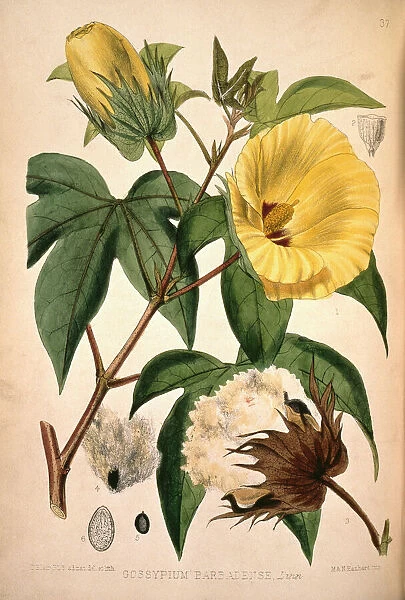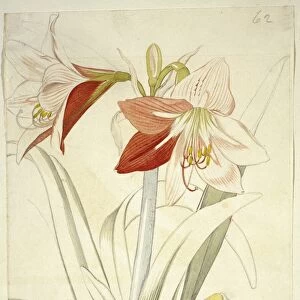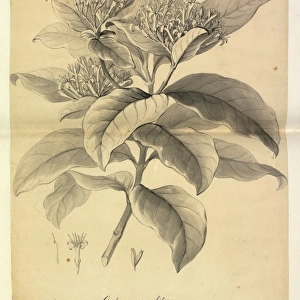Home > Europe > United Kingdom > England > London > Museums > Natural History Museum
Gossypium barbadense, cotton plant
![]()

Wall Art and Photo Gifts from Mary Evans Picture Library
Gossypium barbadense, cotton plant
Illustration from the Botany Library Plate Collection held at the Natural History Museum, London
Mary Evans Picture Library makes available wonderful images created for people to enjoy over the centuries
Media ID 8613143
© Mary Evans Picture Library 2015 - https://copyrighthub.org/s0/hub1/creation/maryevans/MaryEvansPictureID/10706648
Botanical Illustration Cotton Cotton Plant Eudicot Eurosid Gossypium Malvaceae Malvales Malvidae Rosid Angiospermae Dicot Dicotyledon Gossypium Barbadense Magnoliophyta
EDITORS COMMENTS
1. Title: "Gossypium barbadense: A Vibrant Yellow Bloom from the Malvaceae Family" This illustration showcases the exquisite beauty of Gossypium barbadense, commonly known as the cotton plant. Hailing from the rich botanical collections at the Natural History Museum in London, this plate from the Botany Library is a testament to the intricate details and artistic mastery of botanical illustration. The cotton plant, a member of the Malvaceae family, is an essential angiosperm that has been cultivated for thousands of years due to its versatile uses. Gossypium barbadense, specifically, is a popular variety known for its high-quality fiber production and vibrant yellow flowers. As an eudicot, or a dicotyledon, this flowering plant belongs to the Rosid clade within the Eudicots, which includes a vast array of flowering plants. The Malvales order, to which the cotton plant belongs, is characterized by its unique flower structure and net-like veins. The illustration reveals the intricate details of the cotton plant's yellow, five-petaled flower. Each petal is delicately veined, and the reproductive structures, including the stigma, style, and stamens, are clearly visible. The cotton plant's leaves, which are not shown in this illustration, are typically large, lobed, and green. The botanical illustration style, with its meticulous attention to detail and lifelike representation, was a popular means of documenting and sharing new plant discoveries during the 18th and 19th centuries. This stunning illustration of Gossypium barbadense is not only a beautiful work of art but also an invaluable contribution to the historical record of botanical knowledge.
MADE IN THE UK
Safe Shipping with 30 Day Money Back Guarantee
FREE PERSONALISATION*
We are proud to offer a range of customisation features including Personalised Captions, Color Filters and Picture Zoom Tools
SECURE PAYMENTS
We happily accept a wide range of payment options so you can pay for the things you need in the way that is most convenient for you
* Options may vary by product and licensing agreement. Zoomed Pictures can be adjusted in the Basket.













